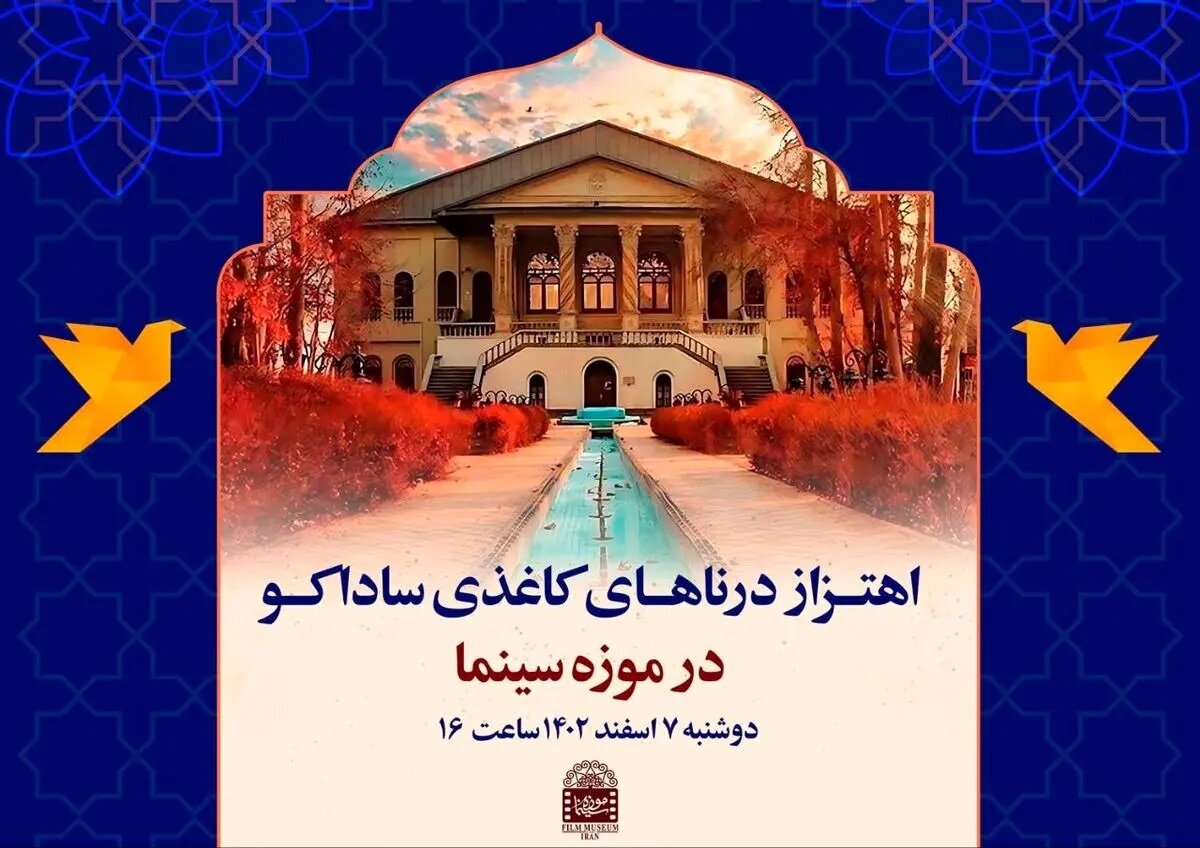Sadako's paper crane to be donated to Film Museum of Iran

TEHRAN-One of Sadako’s origami cranes is set to be donated to the Film Museum of Iran during a ceremony on Monday.
In 2013, a handcrafted origami crane by Sadako Sasaki was presented to Ahmad Mir-Alaei, the secretary of the 27th edition of Iran’s International Film Festival for Children and Youth (ICFF) by the head of Sadako Foundation.
With the coordination of Majid Esmaeili, the director of the Film Museum, this paper crane is intended to be donated to the museum as a symbol of peace and friendship and will be placed in the Children and Teenagers room.
Sadako Sasaki was a young Japanese girl who became a symbol of peace and hope. She was born in Hiroshima in 1943 and, tragically, was only two years old when the atomic bomb was dropped on the city in 1945. Sadako survived the initial blast, but by the time she reached the age of 12, she developed leukemia due to the radiation exposure from the bomb.
During her illness, Sadako heard the ancient Japanese legend that folding 1,000 origami cranes would grant you a wish. Determined to make a full recovery, she began folding cranes with the hope of making a thousand. Despite her deteriorating health, Sadako remained optimistic and folded hundreds of cranes in her hospital bed.
Sadly, Sadako passed away before completing the thousand cranes, but her story did not end there. Her classmates, touched by her determination and spirit, came together to finish folding the remaining cranes in her honor. The legend of Sadako and the 1,000 cranes has since become a symbol of peace, hope, and healing globally.
Sadako's legacy lives on through the thousands of paper cranes sent to Hiroshima each year as a tribute to her and all the innocent victims of war. Her story continues to inspire people worldwide to work towards a more peaceful and harmonious world.
SAB/
Leave a Comment